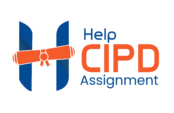5CO01 Assignment Guideline Task One
- December 10, 2021
- Posted by: admin
- Category: CIPD Level 5

Introduction
Each student will be expected to write a formal business report approximately 2500 words long. In addition, you can use the following guide to answer 5CO01 Assignment Task One Questions.
Table of Contents
AC 1.1 Examines the advantages and disadvantages of two different types of organisational structures in different types of organisations, the range of products, services, and customers associated with each, and how they relate to the organisation’s purpose.
Guidelines:
The students will distinguish between Hierarchical, Matrix, Functional, and Horizontal organisational structures.
Answers to this question may include referring to the structure in the organisation where the student works and detailing the products and services provided by the organisation. Students will discuss the advantages and disadvantages of the organisation’s structure and then link the structure to the organisation’s purpose.
After comparing the first and second organisational structures, the students must describe the advantages and disadvantages of each and explain the differences between them.
For instance: Tesco has a hierarchical structure with multiple departments, each coordinated from the top down.
Starbucks Coffee operates as a functional structure with different departments handling different tasks, such as human resources, marketing, and finance. These advantages include employee specialisation, accountability, and clarity of roles and responsibilities. However, it has several disadvantages, including employee collaboration, poor coordination, and ineffective information flow.
AC 1.2 Examines how the organisation’s strategy should be tied to products, services, customers, and revenue.
Guidelines:
By understanding how organisational goals relate to products and services, students will identify how products are sold to enhance organisational survival and growth.
Students will discuss the importance of connecting organisational strategies to customers to meet their needs and foster customer loyalty.
In this module, students will explain how organisational strategies contribute to revenue generation and risk management so that organisational growth and survival are enhanced.
For instance, students will discuss how BMC’s strategic aim impacts the sale of different food items and customers in Manchester and elsewhere. To answer this question, students can refer to the OGSM model.
1.3 Analysing the range of external factors and trends that impact organisations today and in the future.
Guidelines:
Students consider analysis models such as PESTLE, STEEPLE, SWOT, BCG, or Porter’s Five Forces Model for this question.
Students identify external factors that might affect BMC operations in Manchester from the models.
For instance: As part of the PESTLE analysis tool, four elements are evaluated:- Political (tariffs, political stability), Economic (Covid-19 pandemic, economic growth/decline), Social (lifestyles, culture, and norms), Technology (AI, social media), Legal (employment regulations, labour market laws) and Environmental (sustainability, green policies, CSR).). Refer to https://www.cipd.co.uk/knowledge/strategy/organisational-development/pestle-analysis-factsheet. The students should look at how these factors affect BMC’s business and HR operations.
The following are examples of external trends that may impact BMC’s business: Flexible working hours and demographic changes among the workforce.
1.4 Examining two current issues and causes within organisations that will impact product/service delivery and how this may impact people’s practices and solutions.
Guidelines:
Various factors may affect product/service delivery, such as organisational restructuring, new product or service development, new technology developments, new employee and customer initiatives, and skills shortage.
The impact of the issues on the people and the organisation’s practices and solutions are analysed to help shape the work done. For example, human resource practices are shaped by employee mental health, globalisation, new technology, flexible working, and nationalisation.
As an example: Students discuss the challenges faced by BMC operations, such as the inability of the company to think about people and their well-being, resulting in low employee satisfaction and high turnover. In addition, human resource practices have the impact of demoralising employees and thus resulting in poor performance. One answer would be to develop strategies that ensure employees are retained through effective workforce planning. Positive outcomes for the organisation would be increased productivity and performance, recruitment of qualified personnel and experts to carry out organisational roles and responsibilities.
1.5 A discussion of how practices impact organisational systems and structures and subsequently affect the effectiveness of employment, management, and development of people
Guidelines:
- There are two types of organisational systems: closed and open. Students need to distinguish between them.
- Students will discuss how employees’ behaviour affects their success on the job.
- Students will analyse how people practices can influence and enhance people management.
- People practices affect people’s development in organisations, the students will explain.
- The students must write a paragraph describing the potential impact of organisational structures and systems on employee recruitment, talent management, and priorities within the organisation.
1.6 An investigation of the impact of technology on people, work, and working practices, and a discussion of the current and emerging extent of technology use in organisations.
Guidelines:
In addition to improving efficiency and worker well-being, technology impacts work systems in developing new products and services. Students should read the CIPD article on technology and the future of work https://www.cipd.co.uk/knowledge/work/technology/emerging-future-work-factsheet.
The students will demonstrate how technology has improved innovation and creativity at work and how work practices and people have been impacted by technology.
Related :


